Singapore may be a teeny weeny territory, but what it lacks in surface area, it more than makes up for in its vibrant cultural landscape. Catch the MRT to Kampong Glam, Little India or Chinatown (or all three, if you have time), and while away the day in their bustling hawker centres, picturesque side streets and local markets.
We kicked off our second day with a stroll around Kampong Glam, Singapore’s oldest urban quarter. In Malay, kampong means compound, and glam is thought to derive from the gelam tree, an evergreen tree native to the area.
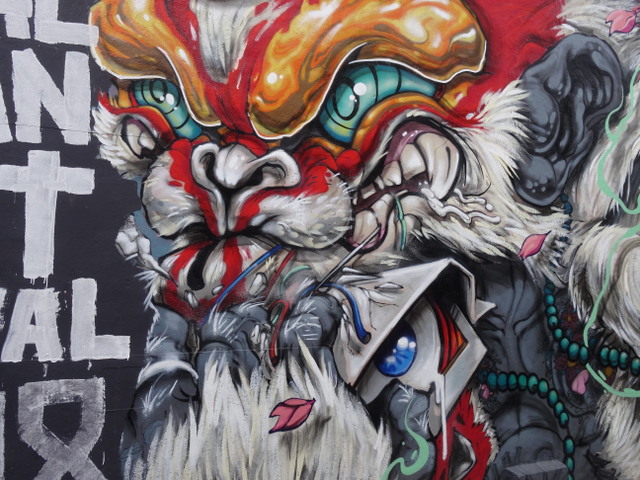
Once a thriving port town, today its streets come alive with trendy watering holes and shops selling traditional batik fabrics, mosaicked lamps and oriental carpets. Haji Lane was an explosion of colour and bold designs, no surface left untouched by the resident street artists. More often than not, architectural elements such as windows or shutters (or in one case, shopping trolleys) were incorporated into the designs.
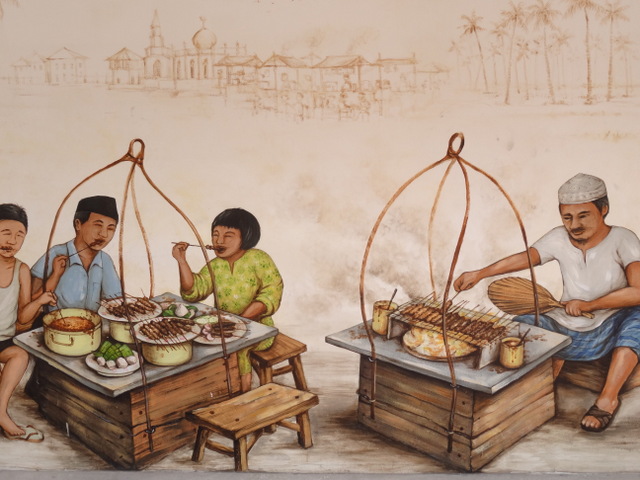
In 1822, Sir Stamford Raffles gave land to Sultan Hussein Mohammed Shah. Over the years, many ethnic groups settled in the area, and a successful trading community was established. Today, Kampong Glam is often referred to as the Arab Quarter, due to its strong ties to the Muslim community.
We first ventured out to Hajjah Fatimah Mosque, which takes its name from the philanthropist Hajjah Fatimah. Drawing on both European and Islamic architectural styles, this mosque is best known for its spire-like minaret which has developed a noticeable tilt, leading it to be dubbed the Leaning Tower of Singapore.
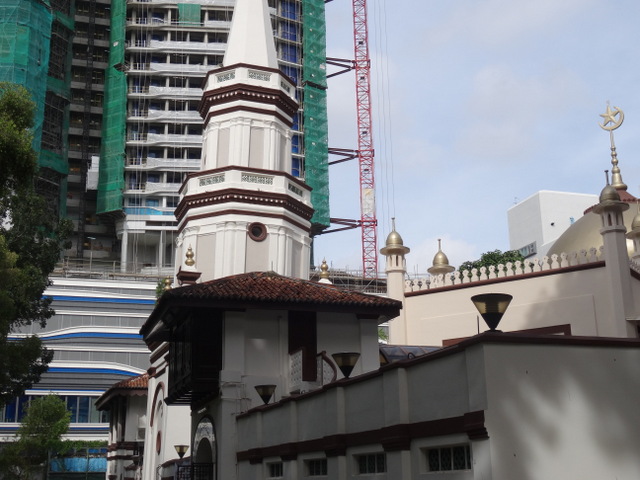
After picking up skewers of fresh fruit for breakfast (and a steaming bowl of laksa, for Laurence), we headed over to Malabar Muslim Jama-ath Mosque, whose façade is entirely covered in sky-blue tiles. Although the first foundation stone was laid in 1956, it wasn’t until 1963 that the building was ready to welcome its first worshippers (and the elaborate tiling wasn’t finished until 1995!). To this day, Malabar Muslim Jama-ath Mosque remains Singapore’s only mosque dedicated to Malabar Muslims hailing from the South Indian state of Kerala.
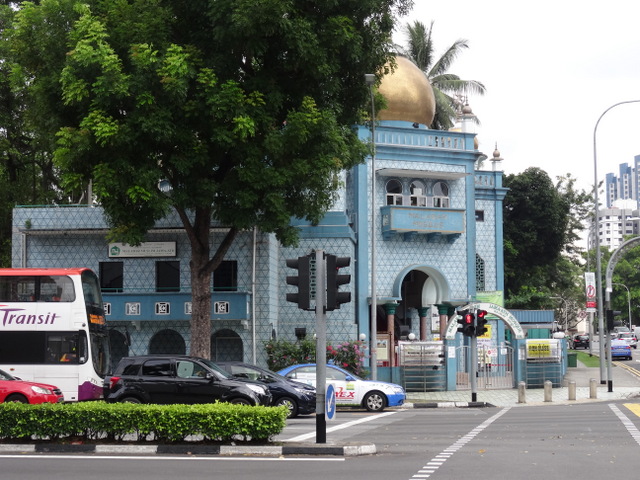
Before leaving Kampong Glam, we passed by Sultan Mosque (also known as Masjid Sultan), an imposing whitewashed structure topped with gleaming golden domes which claims the title of the island’s largest mosque. Sultan Mosque was constructed in the mid-1820s, using funds from Sir Stamford Raffles, but subsequently fell into disrepair and the building you see today is the result of substantial reconstructive works in the early 1930s.
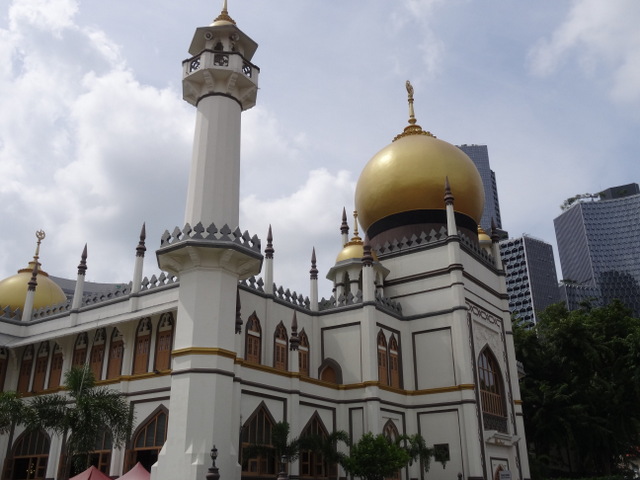
We made our way to Little India on foot, and en route spotted an ice cream hawker cart set up on the pavement ahead of us. Laurence’s pre-trip research was primarily focused on food, and the humble ice cream sandwich was firmly on our radar as a must-try. Who would’ve thought that a block of ice cream stuffed inside a folded slice of rainbow-coloured bread would be so tasty? Not me, that’s for sure – but after one bite I was hooked! (Plus, at SGD$1.20 (c. 70p) a pop, it was way, way cheaper than a ’99 here in the UK!)
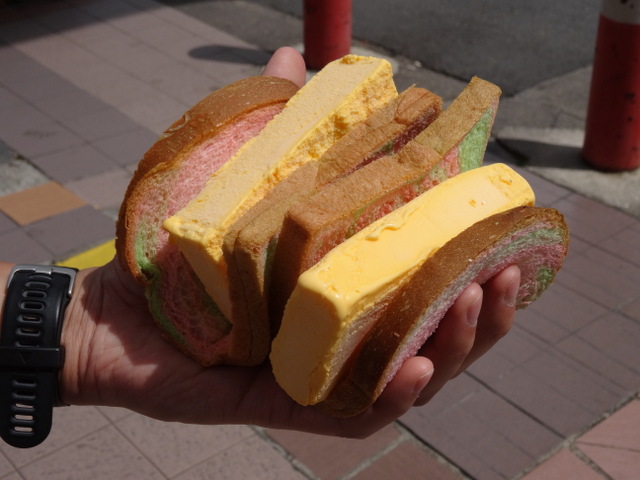
Little India was ornate temples topped with innumerable sculptures, bustling streets, faded pastels and eclectic street art – and quite possibly my favourite ethnic enclave that we visited that day. (Of all the street art we saw in Singapore, the mural featuring jazzy, bike-riding cows in Little India was a personal favourite.)
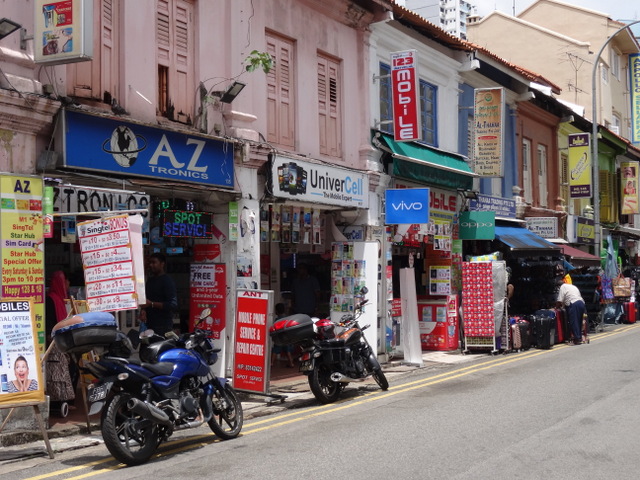

We visited Abdul Gafoor Mosque with the sole intention of admiring the exterior, and ended up being talked through the simplified history of Islam (and some of its teachings and miracles) by a very enthusiastic guide. If you’d like to go inside, you’ll need to leave your shoes at the entrance and, if you’re not suitably covered up, don one of the overcoats hanging on the rail outside.
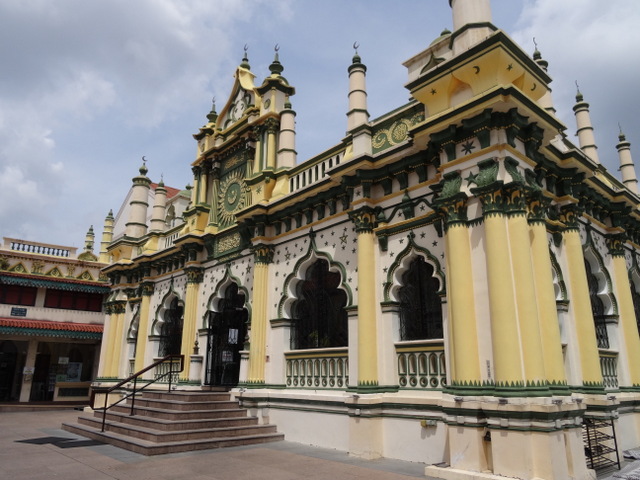
By lunchtime, the clouds had begun to roll in and a light drizzle set in. We’re all too used to the rain here in the UK, so we carried on to our next stop: Petain Road. Designed in what’s known as ‘Late Shophouse Style’, this pretty terrace dates back to the 1920s, and is worth a detour if you’re in the area. We stopped off at a nearby café to quench our thirst, and Laurence took the opportunity to try the local speciality, bandung, a garish pink drink made from a blend of milk and rose cordial.
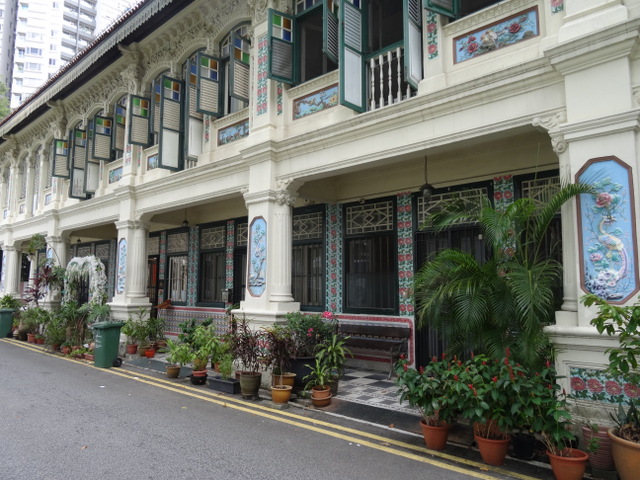
Just as we thought the weather might pick up, it worsened: heavy downpours were evidently on the menu whether we fancied them or not. We’d planned to venture over to Emerald Hill Road, but decided to catch the MRT to Orchard Road and wait out the rain in one of the food courts. (Food Opera at ION Orchard turned out to be a decent place to pass the time, with decent grub at reasonable prices.)
Fuelled up, we set off for Emerald Hill Road (and squeezed another ice cream sandwich into our bellies on the way). Located just off Orchard Road, which is chock-a-block with multi-storey malls, this picturesque street was once home to wealthy Peranakans. These days, you’re more likely to spot hordes of tourists descending on the area at happy hour.

Our final stop of the day was Chinatown, home to a lively market (where we bought a colourful elephant decoration to hang up at home), colourful temples and numerous delicious eateries. We saved Chinatown Complex and Maxwell Food Centre for another day, and on this occasion ventured over to Hawker Chan’s, where Laurence tried their famous soy sauce chicken. This Michelin-starred spot makes a Tesco meal deal look expensive, and is without doubt do-able even on a shoestring budget.


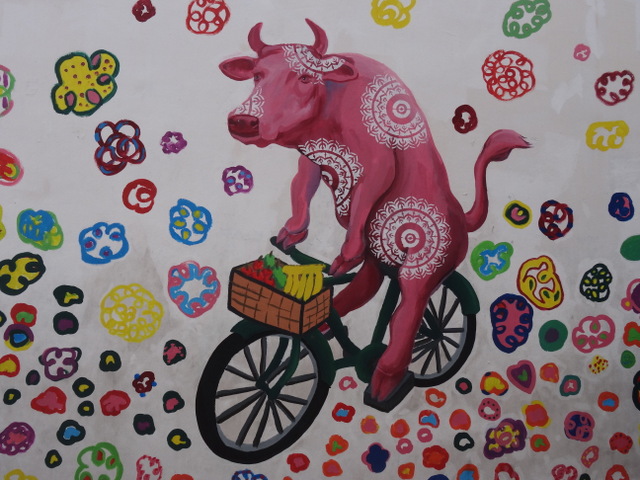
Next time you must try ice-kacang. It is a dessert containing shaved ice, kidney beans and sweetcorn amongst other ingredients!
LikeLiked by 2 people
We didn’t come across ice-kacang – it sounds like a curious mix of sweet and savoury ingredients! I’ll keep an eye out for it next time 🙂 Thanks for the top, Lindsey!
LikeLiked by 1 person
We loved the different cultures in Singapore. Your pics really took us back there
LikeLiked by 2 people
Me, too! Singapore’s a real mix of cultures, and it was fascinating to see them all come together in one place. Thanks for commenting!
LikeLiked by 1 person